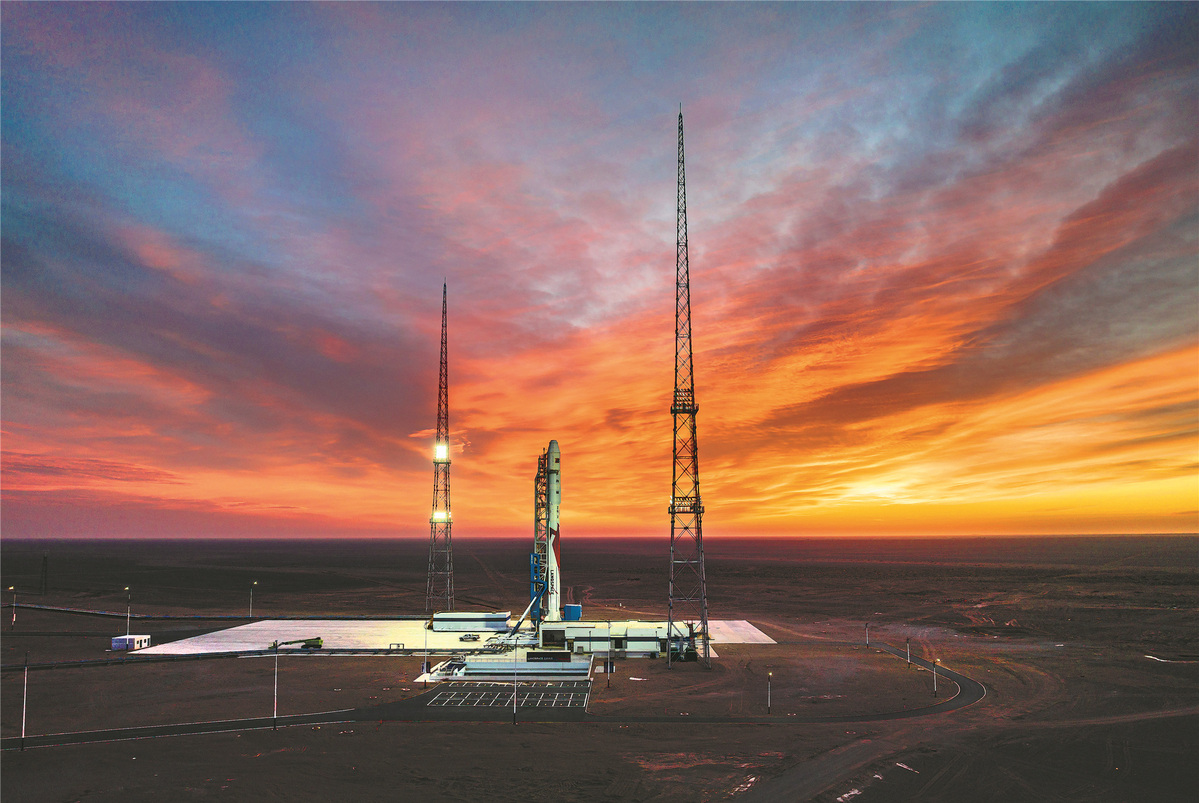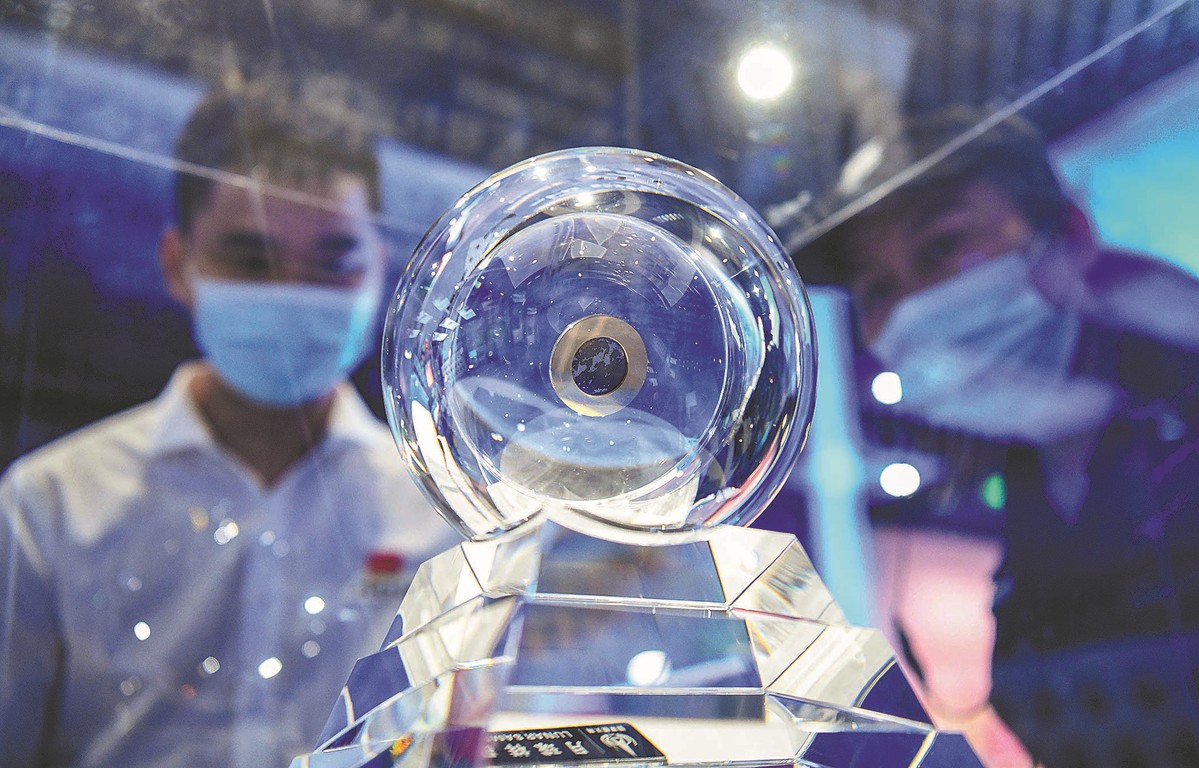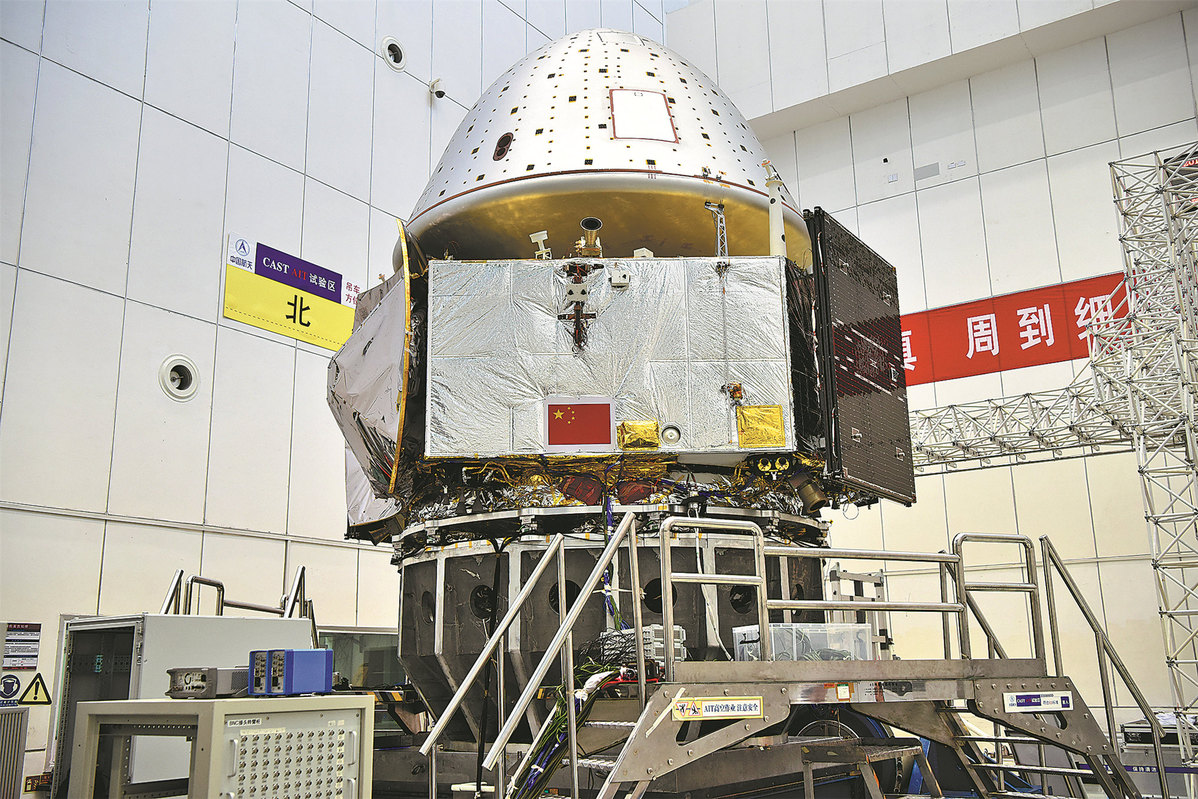China's space missions break new ground
Lunar samples, mineral discovery and experience for future missions among gains


Chinese scientists have made major advances in the research of Earth's nearest celestial neighbor, the moon, thanks to samples and data gathered by China's lunar probes.
In the latest development, water locked in glass beads has been found in lunar samples returned by the Chang'e 5 mission.
A study published in Nature Geoscience journal late last month revealed that the soil samples collected by Chang'e 5 had impact glass beads that contained water in the form of hydroxyl, a molecule consisting of one atom of oxygen and one of hydrogen.
Hydroxyl is one of the most common ions in water.
The beads are created when meteoroids hit the moon's surface, throwing up hot molten droplets that solidify. They act like a sponge, soaking up hydrogen atoms carried by solar winds to form hydroxyl, thus playing a pivotal role in the water cycle on the lunar surface, the study said.
The paper was published by a team led by scientists from the Institute of Geology and Geophysics from the Chinese Academy of Sciences.
Their findings indicate that impact glass on the lunar surface is capable of storing solar wind-derived water and releasing it into space.
The water is relatively easy to extract and could represent a potential resource for future lunar exploration, according to Hu Sen, a researcher from the institute and one of the key scientists behind the study.
While each bead only holds a tiny amount of water, vast amounts of glass beads in the lunar soil could hold up to 270 billion metric tons of water, researchers estimate.

New lunar mineral found
The samples also led to the discovery of a sixth new lunar mineral.
Named Changesite-(Y), it was found last year by scientists at the Beijing Research Institute of Uranium Geology and has been certified by the International Mineralogical Association and its Commission on New Minerals, Nomenclature and Classification.
Changesite-(Y), which is a type of lunar merrillite, a calcium phosphate mineral, is the first lunar mineral discovered by Chinese scientists, making China the third country in the world after the United States and Russia to have achieved such a feat.
Li Ziying, chief scientist of lunar sample research at the Beijing Research Institute of Uranium Geology, said the area where the Chang'e 5 probe landed and collected the samples is geologically younger than the landing sites chosen for previous US and Soviet missions, and so the characteristics of the soil there could be different from previously collected samples.
In addition, scientists at the institute measured the content and traits of helium-3 in the samples. Li said that the results may help facilitate prospecting and assessments of the resource, which is an ideal fuel for future nuclear fusion power plants.
One of the most notable space missions in 2020, the 23-day Chang'e 5 robotic mission was the first to return samples to China and one of the country's most sophisticated and challenging space endeavors. On Dec 17, 2020, it returned to Earth with 1,731 grams of rocks and soil, the first lunar samples collected since the Apollo era.
Before Chang'e 5, China deployed two lunar landing craft and two rovers. Yutu 2, which was part of the Chang'e 4 mission, is now the longest-working lunar rover of all time and continues to transmit data and images.

Martian exploration
Elsewhere in the solar system, Mars rover Zhurong has traveled more than 1,900 meters and obtained a great deal of data and images en route to its destination, an ancient coastal area on Utopia Planitia, the vast Martian plain where it landed. The 1.85-meter-tall, 240-kilogram robot, named after the ancient Chinese god of fire, touched down on the Red Planet on May 15, 2021, and began to travel across its surface a week later.
Zhurong is the core component of the Tianwen 1 mission, China's first independent interplanetary exploration mission.
Zhurong and the Tianwen 1 orbiter, which relays signals for the rover, have transmitted around 1,800 gigabytes of raw scientific data to Earth.
Pang Zhihao, an expert on space exploration technology and a renowned writer on spaceflight, said that Tianwen 1 marks a milestone for China's space industry and is a symbol of its rising status in the field of deep-space exploration.
"Scientifically speaking, the mission has been retrieving valuable information about Mars and the solar system and has given Chinese researchers their first opportunity to closely observe and study the planet. And in terms of engineering, it shows China's ability to organize an exceptionally sophisticated, challenging expedition," he said.
Tianwen 1 has signaled a good start to the country's interplanetary program and has laid a solid foundation for the next steps, which will involve more demanding endeavors such as bringing Martian soil samples back to Earth and landing a probe on an asteroid, Pang said.


















